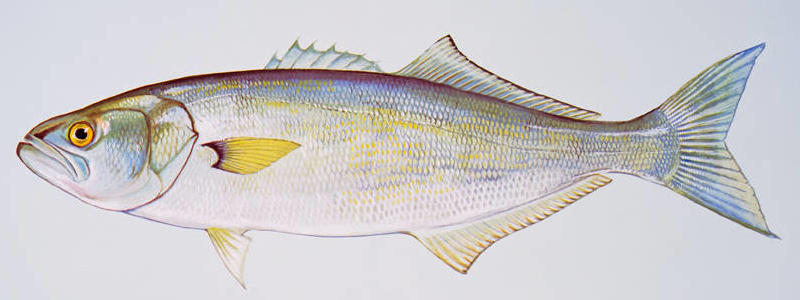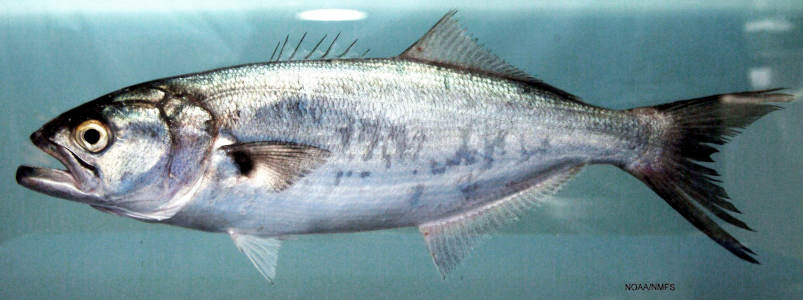Bluefish (Pomatomus saltatrix)


Bluefish is a saltwater species of fish and is the only surviving member of its genus Pomatomus and family Pomatomidae. Pomatomus meaning cover cut, referring to its serrated preopercle. Saltatrix meaning one who leaps, referring to how it will leap out of water when chasing bait.
Where to Find Bluefish
The bluefish is a saltwater dwelling fish that ranges from brackish estuaries and rivers to pelagic waters in the ocean. Bluefish are an international fish found across the globe with the exception of the northern Pacific Ocean. In the western North Atlantic Ocean, their range is roughly from Nova Scotia to Bermuda. Bluefish can be caught by anglers from all Atlantic states from Maine to Texas.
While lots of anglers associate bluefish with exciting topwater fishing and blitzes, they can be found throughout the entire water column.
- Snapper less than 1 lb
- Common 2 to 4 lb
- Trophy 12 - 18 lb
- Record 22 lb plus
Other Names for Bluefish
Other names people have used to refer to this fish include tailor, chopper, elf, shad, yellow eyes, blue, greenfish, skipjack, snap mackerel, horse mackerel, skip mackerel, and fatback.
Size based nicknames include snappers, rats, cocktails, gators, and gorillas.
When to Fish for Bluefish
Bluefish migrate long distances across the ocean, so in theory, you could follow them and fish for them most of the year. In practice, most people will just fish for them when they reach their local beaches or nearshore waters seasonally.
- Snapper 12 inches and less
- Common 14 to 24 inches
- Trophy 30 to 34 inches
- Record 35 inches plus
Diet of Bluefish
Bluefish are majority fish eaters but will shift to eating benthic (bottom oriented) prey if need be. (this shift varies by location and season) When they do shift to benthic creatures it's normally prey such as marine worms and shrimp. While Bluefish are notorious for eating just about anything that swims, their primary diet tends to be fish that gather in large schools.
Bay anchovy (Anchoa mitchilli) and spearing (Menidia menidia) are important for young of the year of the fish but also when larger adults head into estuaries. Menhaden (Brevoortia tyrannus) is important throughout the year but especially during the fall when all age classes of Blues will chow down on them. Once Bluefish get enough size to them they can start eating through schools of Spot and Atlantic Croaker. When adults are offshore common food items include herring, squid, and butterfish.
One important note about how the bluefish feeds, is that unlike lots of fish that rely on swallowing their prey whole, bluefish can take bites with their teeth. For example, if a Striped Bass wants to eat an anchovy, it needs to swallow it in its entirety. Whereas a snapper bluefish (or multiple individuals) can devour that same anchovy in 2 to 3 bites, cutting parts of the fish clean off.
What Tackle to Use for Bluefish
Bluefish are largely a piscivorous species but are also opportunistic and willing to eat most meat. As such you have the option of using lures, live bait, or dead bait. Since bluefish have razor sharp teeth, it is often recommended to use heavy mono or wire leaders. However, if long lures are used, more typical leaders can be used since the line tie is far enough from their teeth.
The size of lures will vary greatly by what class of fish you are targeting. Young of the year fish can be caught on ultralight freshwater sized lures. Adult bluefish can be caught on Striped Bass lures.
